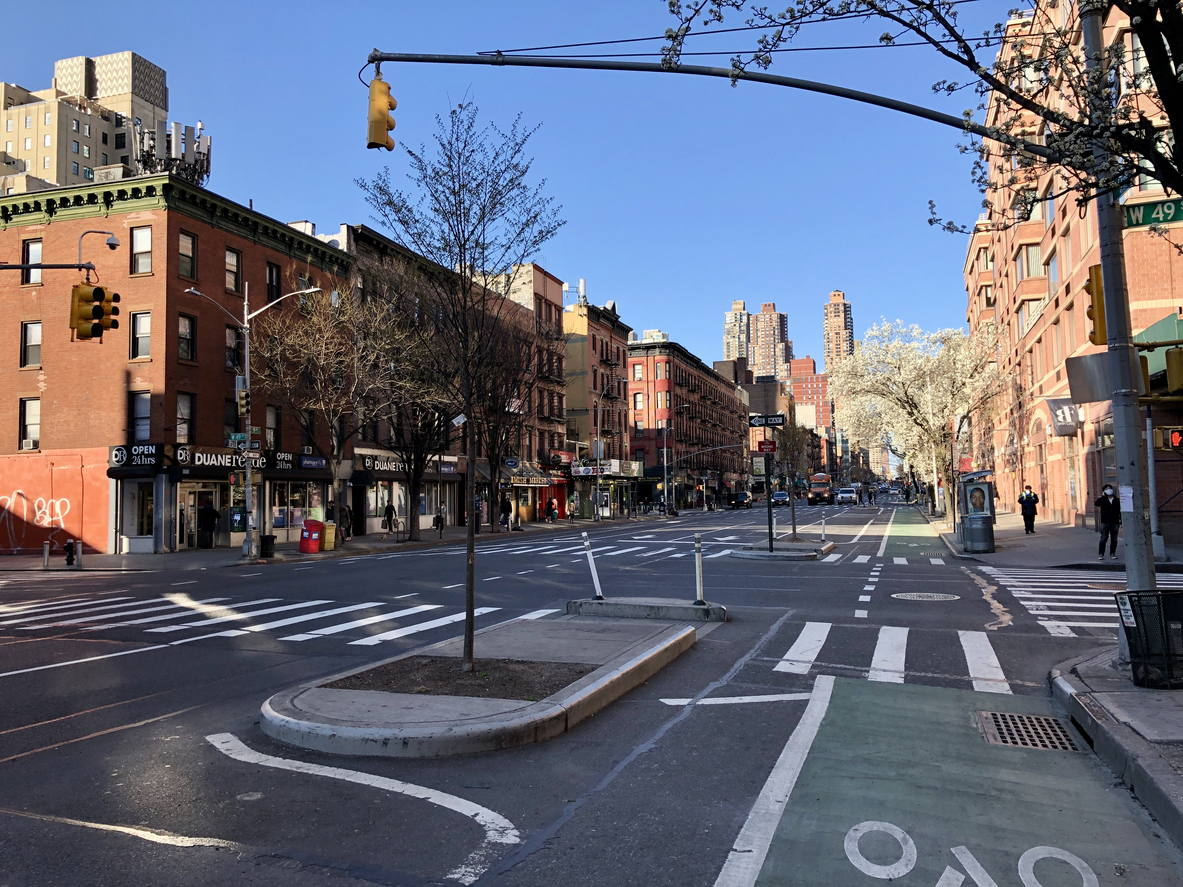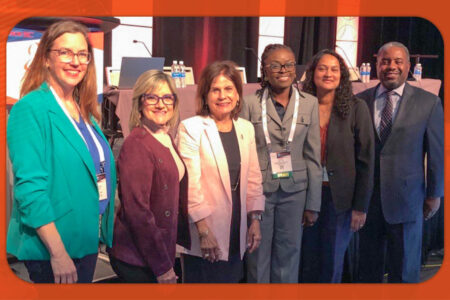
Share On Social!
Helping families recover from the economic impact of COVID-19 requires far more than a paycheck, particularly when already underfunded social services and transit agencies face budget cuts.
To build resilience after COVID-19, cities need to invest in people and in places.
More specifically, cities need to build a community-based workforce to ramp up social services, and cities need to invest in affordable transportation options.
Cities Face More Than COVID-19 Economic Devastation
The economic fallout from COVID-19 is real for cities and families, particularly for Latinos, who were already drastically underpaid compared to white workers.
Beyond unequal pay, Latino and low-income families face a legacy of discriminatory policies and practices that have resulted in unaffordable housing, unsafe transportation options, inadequate schools, being uninsured or under-insured, and unfair policing practices.
Training people for better jobs does not fix any of these issues.
Additionally, college didn’t help close the wage gap for women or Latinos between 2000 and 2018, according to the Economic Policy Institute.
At nearly every education level, women are paid consistently less than their male counterparts and Latinos are paid consistently less than their white counterparts. In fact, Latinos with a college degree earned roughly the same proportion of white wages in 2018 (82.0%) as they did in 2000 (82.8%).
The primary focus of economic and workforce development strategies should not merely be job creation and placement. No one knows what the labor force will look like after the pandemic.

The primary focus should be meeting the social and health needs of residents.
Invest in People: Build a Community-Based Workforce
Amid both a public health pandemic and protests against discriminatory policing, cities should build a community-based workforce that can respond to these needs. This includes training contact tracers and trauma-informed social workers.
Contact Tracers. Currently, many cities are struggling to hire and train enough case investigators and contact tracers to prevent community transmission of COVID-19. Some cities are outsourcing contact tracers.
When contact tracers aren’t embedded in the communities they serve, there is low community engagement and preventable spikes and persistence of COVID-19 community transmission, according to A Guide to Community-Based Workforce Principles for Contact Tracers.
“The coronavirus is tearing through Black and Brown communities in California like a heat-seeking missile,” wrote Dr. Anthony Iton, senior vice president of the California Endowment in CalMatters. “These communities are more likely to uninsured, low income and often harbor a great deal of suspicion, if not outright mistrust, of government authorities, even ones focused only on health. Investing in a new contact tracing workforce is also about California’s economic recovery and ensuring those most impacted by COVID–19’s economic impact are not shut out.”
Partnering with local organizations is crucial to address mistrust.
Additionally, partnering with local universities and colleges is an excellent way to invest in people and develop a community-based workforce program to meet contact tracing and other community needs, such as certificates in:
- data entry
- data analytics
- records management
- case management
- customer service
Social Workers. Too many social welfare tasks fall to armed police officers.
Amid protests against police brutality, many cities are exploring how to reform/reimagine police, which often includes partnering with community-based social, behavioral, and mental health services.
However, community partners may lack capacity for city-wide change.
Building a community-based workforce to address social, behavioral, and mental health needs can simultaneously help families recover from the economic impact of COVID-19 and scale back responsibilities of law enforcement.
Partnering with local universities and colleges is an excellent way to invest in people and develop a community-based workforce program to meet social and behavioral needs, such as certificates in:
- addictions and substance use disorders
- human services
- behavioral health sciences
- human development
- family life education
- development disabilities
- trauma counseling
- trauma-informed perspectives
- community health workers
Of course, cities also need to reduce income inequities and ensure all workers earn livable wages. They also need access to paid sick leave and health insurance, regardless of the industry they work.
Invest in Places: Affordable Transportation
Housing and transportation are the two largest household expenses. However, transportation is often left out of social and economic conversations, such as helping families recover from coronavirus.
Failing to address transportation security has perpetuated the notion that driving is a choice, unlike housing.
Unfortunately, many cities have built sprawling neighborhoods and transportation networks solely for driving and have failed to invest in walking, biking, and transit, as well as compact, mixed-use neighborhoods that support walking, biking, and transit.
Over decades, these auto-centric policies and practices have built cities where it is neither safe nor feasible to walk, bike, or bus.
This means families must spend thousands of dollars annually on a vehicle just to get to work.
This is inequitable and unfair. It also leaves many families transportation-cost burdened, which means they spend more than 15% of their annual income on transportation.
For example, households in San Antonio (64% Latino) spend roughly $12,000 on transportation yearly. Imagine what families could save, invest in education or homeownership, or spend locally if they had safe, reliable transportation options.
Transportation insecurity is a major social injustice.
That’s why city leaders and community-based partners must consider transportation security along with housing security when developing COVID-19 recovery plans.
Examples of Investing in People and Places
In Houston (44.8% Latino), roughly 840,000 of 850,000 households are transportation-cost burdened.
A transportation advocacy group in Houston, LINK Houston, wanted to address these issues.
They compared where affordable housing and affordable transportation coexist, or not. They found that only 44% of rental units in Houston are affordable to moderate-income households, and only 1 out of 3 of those affordable units is near high-quality, affordable transportation.
LINK Houston developed a counselor facilitation guide to help housing and financial counselors assist their clients in considering transportation in their housing decision.
LINK Houston also made some recommendations to improve both housing and transportation quality and affordability.
They recommend:
- Preserve and build affordable housing in areas with high-quality, affordable transportation.
- Increase opportunities to walk, bike and use transit near affordable housing.
- Map and monitor affordable housing and affordable transportation to demonstrate and direct the beneficial impacts of policies and investments in affordability for residents.
- Assess, compare, and prioritize potential affordable housing sites to improve access to affordable transportation.
- Develop resources to help people understand how housing and transportation impact overall affordability.
 Some cities, like Austin, continue supporting investment in transit and integrating it with affordable housing—even though they had to shrink their $10 billion plan to a $7 billion dollar plan due to the economic backlash of COVID-19.
Some cities, like Austin, continue supporting investment in transit and integrating it with affordable housing—even though they had to shrink their $10 billion plan to a $7 billion dollar plan due to the economic backlash of COVID-19.
Even with a reduction, Austin is one step closer to addressing community needs than San Antonio, which decided put transit on the back burner.
Across the country, voters can expect to see transit on the ballot in November.
Share this with local leaders and housing/transportation advocates.
Urge them to invest in people and places by building a community-based workforce and increasing affordable transportation opportunities. Get involved in task forces and committees that are discussing COVID recovery and housing/transportation.
Stay up to date with health equity efforts in the aftermath of COVID-19!
By The Numbers
23.7
percent
of Latino children are living in poverty



